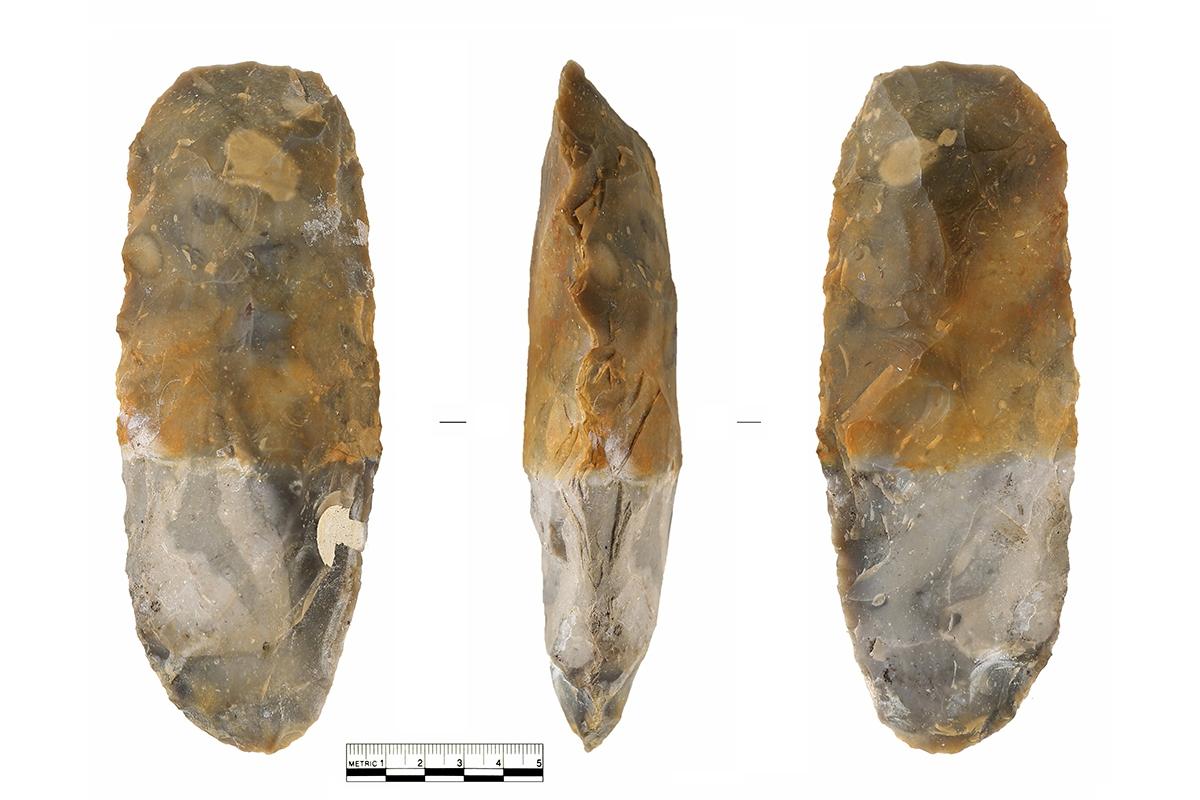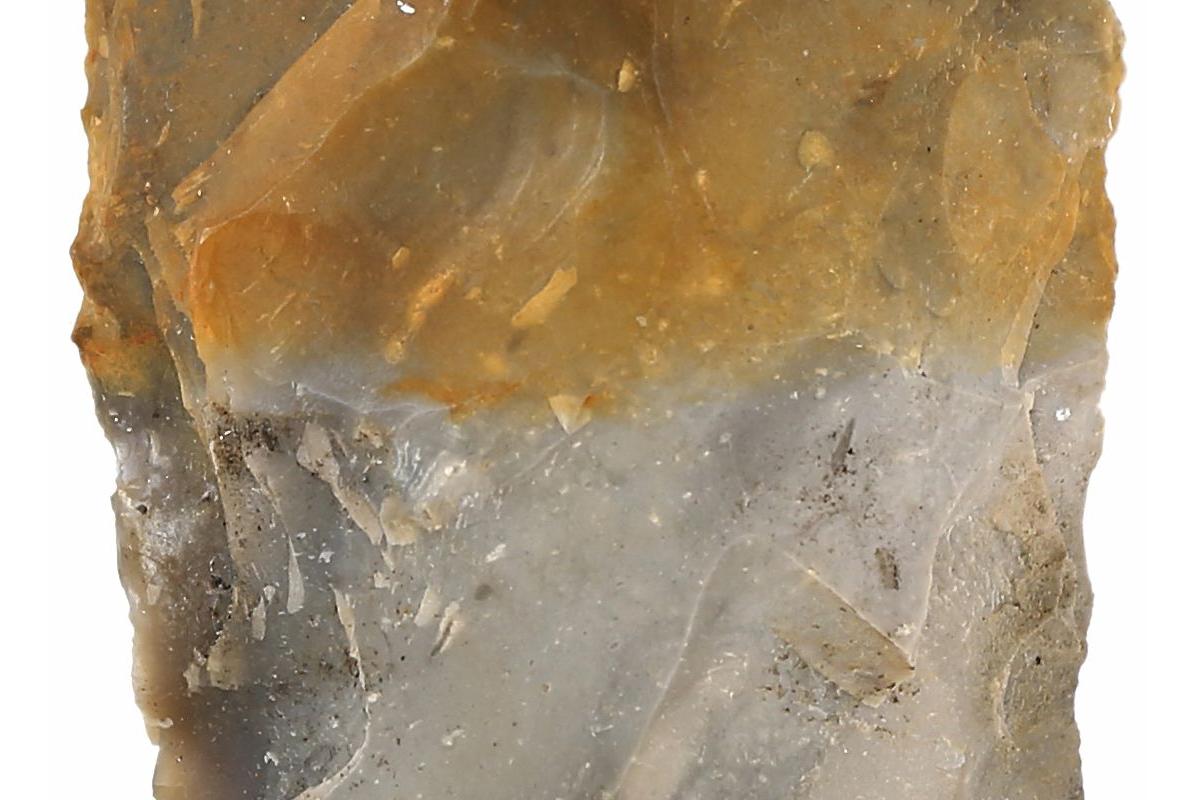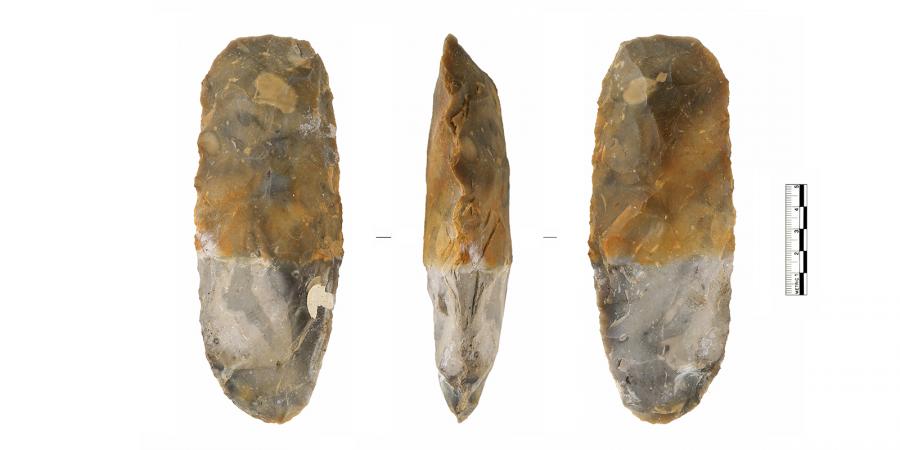This replica Mesolithic tranchet axe head, made by Phil Harding, was hafted in an oak handle, used to fell a tree and stored in a bucket of water for a year or so to prevent the haft from shrinking. In this remarkably short space of time the tannins leached from the oak and were deposited onto the porous surface of the flint, where it protruded beyond the haft. It is unlikely that the hafted section of the axe remained dry, and as this has not been stained, something else must be happening. The most obvious difference is that there was less oxygen access to the hafted section.


Flint tools also absorb iron minerals from sandy soils and gravel although after thousands of years the stain remains restricted to the surface.
A similar process was adopted by Victorian forgers who boiled flint replicas in solutions containing rusty nails to recreate the staining seen on Palaeolithic flint tools.
Tannins are interesting in themselves; Canadian backwoodsmen boiled their iron tools in tea (which is full of tannins) to help prevent them rusting.
Medieval black ink was made by boiling iron with oak galls (which also contain tannins).
By Phil Harding, Archaeologist and Lynn Wootten, Conservator
